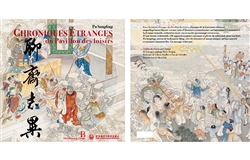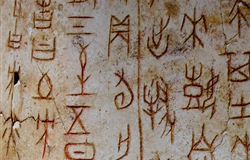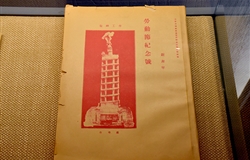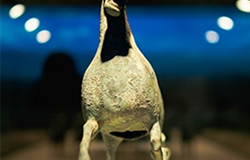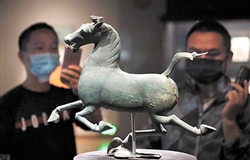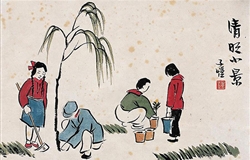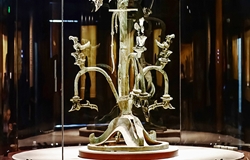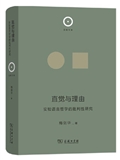Culture
-
FILE PHOTO: The cover of the French version of Liaozhai Zhiyi At the end of 2020, China’s Foreign Language Teaching and Research Press an…[详细]05-27-2021
-
In a recent interview with CSST, renowned archaeologist Liu Yiman gave a general account of China’s 122-year study of oracle bone script. [详细]05-20-2021
-
An issue of the monthly magazine New Youth displayed in the Red Building in Beijing Photo: CFP The New Culture Movement was a 1915-23 campaign …[详细]05-13-2021
-
The New Culture Movement did disrupt the negative parts of Confucianism that constrained individuality, but did not overturn positive Confucian valu…[详细]05-13-2021
-
As socialist thoughts spread widely across the country, more and more Chinese people recognized the role of workers in promoting social development.…[详细]04-29-2021
-
China has a tradition of intertwining literature with history. Artistic expression plays an important role in writing history, while literature is u…[详细]04-22-2021
-
The bronze galloping horse preserved in the Gansu Provincial Museum seen from another angle Photo: 669PIC In 1969, an ancient tomb was accident…[详细]04-15-2021
-
The Han Dynasty bronze galloping horse displayed at Gansu Provincial Museum on June 17, 2020 Photo: CNSPHOTO Bronzeware is one of the most impo…[详细]04-15-2021
-
The Qingming Festival, or Tomb-Sweeping Day, falls on the first day of the fifth solar term (the 24 solar terms divide a year into 24 segments based…[详细]04-08-2021
-
The Sanxingdui culture is remarkable as it seems to have developed independently from the other cultures in ancient China, with no similar finds occ…[详细]04-01-2021
- In 221 BCE, the Qin wars of conquest brought an end to the Warring States Period, a tumultuous era marked by…MORE
- The tradition of painting coffins is deeply rooted in Han culture, and the origin of the lian-bi patterns ca…MORE
- China’s Great Wall dates back as early as to the Spring and Autumn period.MORE
- The Miaodigou culture was viewed as the heyday of painted pottery.MORE
- Xu Zhimo was known for his efforts to set Chinese poetry free from the constraints of its traditional forms,…MORE
-
Let me state that I am against a certain “apologetic” stance taken by the entire field of the humanities r…[详细]

